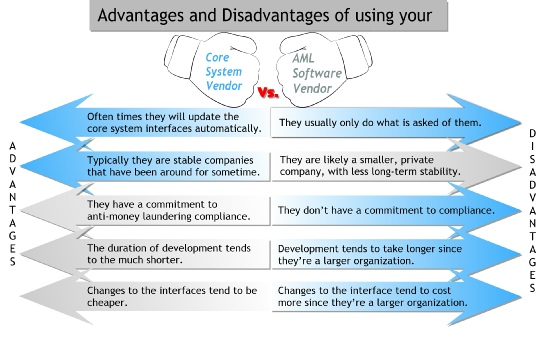The pervasiveness of buzzwords and conversation about new technologies in the banking and financial services industries can be overwhelming and seem daunting. Especially when people, like myself as a technologist, talk about them as if they’re going to change the market and react to them as if their change is tomorrow, instead of as future insights. When the cloud became a conversation piece, people were so inundated with news, information and advertisements about the cloud, that it created an unintended consequence; there was no time to have the discussion about what a cloud was, to allay people’s fears. The same thing is now happening with Data Science, Artificial Intelligence, and Robotic Process Automation but we have an opportunity to get ahead of the discussion and figure out where it fits and how to make it fit.
 Data science and Artificial Intelligence aren’t new concepts, by any stretch of the imagination, and that is part of the issue. We have been overwhelmed with different varieties of representations of artificial intelligence, by Hollywood and other entertainment, for years. Many of those same imaginings are what makes the whole idea so complex for people today. The fictitious images of robots coming to our workplace and replacing us, making decisions for us and guiding our lives makes the whole proposition scarier than it is, or should be.
Data science and Artificial Intelligence aren’t new concepts, by any stretch of the imagination, and that is part of the issue. We have been overwhelmed with different varieties of representations of artificial intelligence, by Hollywood and other entertainment, for years. Many of those same imaginings are what makes the whole idea so complex for people today. The fictitious images of robots coming to our workplace and replacing us, making decisions for us and guiding our lives makes the whole proposition scarier than it is, or should be.
Data science, or data driven science, is something that we have all been doing for a very long time. It is the process of using multi-disciplined scientific efforts to extract meaning and insights from the data that is available, despite the form.
 The common data types are structured and unstructured:
The common data types are structured and unstructured:
Structured Data is generally neater and cleaner because someone has taken the time to put the data in a form that both humans and machines can understand. Think about all the time that you have spent over the course of your career taking data, that was relevant to a topic and put it into spreadsheets or databases, with nice clean headers and organization. This tedious process made the data simple for you and others to use, manipulate and interpret to drive real business insights and drive the decision-making process. That is structured data at its finest.
 Unstructured Data is more complex to use and is often some of the most valuable data. Think of living in a world dominated by social media and text messaging, where the intricacies of human interaction can sometimes get lost at 140 characters. Human interaction requires context that lies in tonality, inflection, gestures and many other factors that can’t be neatly compartmentalized, but are relevant to the context of the conversation. That relevant content, with all its difference and lack of conformity hold hidden gems when considering the total value of a conversation, as a data set. So, think of unstructured data as being able to take a whole conversation as a data set, rather than simple reliance on keywords.
Unstructured Data is more complex to use and is often some of the most valuable data. Think of living in a world dominated by social media and text messaging, where the intricacies of human interaction can sometimes get lost at 140 characters. Human interaction requires context that lies in tonality, inflection, gestures and many other factors that can’t be neatly compartmentalized, but are relevant to the context of the conversation. That relevant content, with all its difference and lack of conformity hold hidden gems when considering the total value of a conversation, as a data set. So, think of unstructured data as being able to take a whole conversation as a data set, rather than simple reliance on keywords.
Other relevant data elements include labeled data or unlabeled data:
Labeled (Tagged) Data is data that has very specific characteristics, that are known and measurable. In the world of AML, it would be the difference between looking at the sender or beneficiary of a transaction and suspecting bad behavior vs knowing that the person has been the subject, of an alert that caused a SAR to be created and submitted. It could also be the existence of a known money laundering methodology, that has been proven to be true, and the examples in cases or alerts. This would provide you with a reasonable basis for assuming that the data contains true and actionable items.
Unlabeled (Untagged) Data is data that possibly has the same characteristics, but they are not clearly known or measurable. So, a good way of thinking about it, all your transactions are similar in the fact that they are transactions, but if they weren’t flagged by  transaction management systems (TM), then the assumption is that they are fine.
transaction management systems (TM), then the assumption is that they are fine.
Machine learning is another valuable tool in the Data Science arsenal. Some would say it is, arguably, the most important factor in the entire process. Simply put, it’s the ability for you to allow a system to analyze the data and learn the meaning and intent of the data that is presented to it.
There are two important types of machine learning, supervised and unsupervised:
Supervised Learning is the process of you telling the machine what you want and expect for it to learn from the data that is presented to it. A good way of thinking of it is when you first learned how to ride a bicycle. You were given knowledge of the equipment, task, conditions and standards that were expected for you to complete the task. You were shown what a bike was, how it operated, an understanding of a need for balance and your parent(s) there for support. Hopefully, you mastered the task, unlike me, without a significant spill or two.
Unsupervised Learning on the other hand, is the pure presentation of data and allowing the machine, based upon the things it knows, to present you with insights that it can determine from the resources it has. It is extremely helpful in pulling out hidden knowledge in data that may not be visible to the human mind. The things that the limits of human cognition and comprehension don’t allow us to interpret, mostly because of the sheer size and complexity of the data, become easy to a computer and its ability to see in multiple dimensions of the data simultaneously.
Artificial Intelligence (AI) is a whole different story, and a term that gets thrown around far too freely, just like the ‘cloud’. Merriam Webster defines AI as “1: a branch of computer science dealing with the simulation of intelligent behavior in computers 2: the capability of a machine to imitate intelligent human behavior”. (Merriam Webster Dictionary, 2017) This is where the rubber meets the road as far as computers and systems mimicking human cognition and behavior. Although the promise of fully human computers, like Rosie from the Jetsons and C3PO, hasn’t been fully realized, they are making amazing strides every day. Many systems claim to be AI, but because much of the technology hasn’t quite made it there, are only AI process enhanced. You can teach a computer to simulate simple tasks, such as to understand a catalog of words, and perform a handful of tasks, but to date, there are still many tasks that can’t be interpreted.
Now that we have covered some of the basics of what AI, machine learning, and data science are; let’s discuss what it means to us in AML, and what is possible now. One of the biggest hurdles in the financial services sector is the fact that we don’t have the right to delegate much of the decision-making processes that we deal with every day to others; people or machines. SAR or don’t SAR, onboard or don’t onboard, and other decisions, even if machine assisted, still require human intervention, for both regulatory and operational reasons. To that end, one of the greatest opportunities for use of these new technologies and practices is in the ability to use machines to extend your workforce, and increase efficiency. Regulatory compliance is a cost-center to the business, but is extremely important to the safe and sound health of a bank or other financial institution. Often, the number of people necessary to ensure compliance becomes a major part of the organizations budget under normal operations, but becomes exaggerated during lookbacks and other exercises. A human being can only accomplish so much work during a traditional 8-hour day, without accounting for breaks, lunch, and other daily responsibilities, whereas a computer doesn’t have those limitations.
An example of a way to introduce AI based technology to your environment, could be as simple as teaching a system the requisite data collection steps to provide a Case Analyst the necessary information needed to speed up the case completion process. This ability, known as Robotic Process Automation (RPA), when coupled with AI means the ability to have “intelligent agents” gathering and presenting data in a fashion that is ultimately tailored to specific use cases and functions. Imagine if a case takes approximately an hour to complete, and most of that time is spent on research, then how many cases would that analyst be able to clear if all the research was done for them, in milliseconds by another system.
Another place where AI and machine learning would be valuable is rules and AML system tuning and model validation. Our reliance on TM systems to tell us whether a transaction is good or bad is often skewed or flawed by a single factor, humans. We spend countless hours creating rules and scenarios to ensure that we have opportunities to mitigate whatever transactional risk there may be, and then we only reevaluate them once a year. The use of these emerging technologies could facilitate new rules and scenarios to be developed, validated, and implemented with relative certainty compared to manual methods.
Some companies are using machine learning as a way of eliminating false positives and negatives, by allowing the system to identify patterns of activity that redefine their understanding of customer activity. Also, to indicate activity patterns that are analogous to known bad activity, that traditional rules may not detect, such as the person who uses significantly higher levels of complexity to circumvent detection. This is a good example of where tagged vs untagged, and structured vs unstructured data becomes invaluable to an organization. A system could use tagged data, for example; known SARS, as the primary training set to learn all of the elements of bad activity (jurisdiction, persons, transaction types, etc.), examine the evidences of that bad activity, SAR narratives (unstructured data), KYC information (structured data), and use all of that combined knowledge against other unflagged transactions to identify similar activities and characteristics which need to be analyzed for rules and scenario building.
While all the above examples are great, and I hope that this article got your mind going, the real answer is what is right for you. Just like the cloud, these new technologies should be considered part of a greater roadmap, and thoughtfully integrated to your process.
As a rule of thumb, I always ask myself, as a technologist, three important questions when considering bringing in new things, especially those that require a significant change to the organization, or heavy lifting during implementation:
- Does this truly benefit the organization or just interest me? We geeks are funny people when it comes to the cool factor, look at the lines for new iPhones as proof. However, just because I may want the new iPhone, the question is do I really need it, and, if not, does it improve things for me at all.
- Is the organization ready for a change of this magnitude? An organization’s ability and capacity to change may not match their desire to change. Hence why change is so hard! Is there both the ability and capacity for the organization to accept and master the change that I want to implement, and, if so, at what cost?
- Can I justify the cost and benefits of the change to someone other than myself? Even though I, as an executive, may be the person solely responsible for the change and all of the work and potential for peril or success, will others see it as a net positive? Many great technology innovations have been great, in concept, but failed because, no matter how innovative or cutting edge, no one wanted to use them. This question is about winning concurrent champions to your idea.







